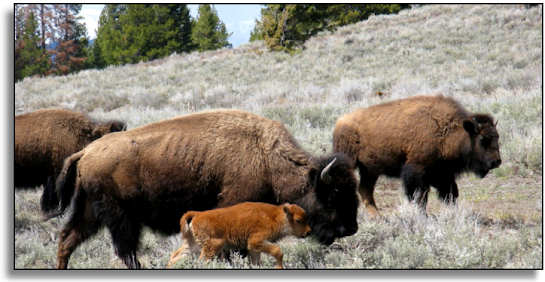A recent article from the Rewilding Institute, authored by a former U. S. Fish & Wildlife Service biologist and two Native Alaskans, cautions us not to focus on differences between traditional Indigenous beliefs and the “modern” wilderness concept. Rather, with the huge environmental threats that we all face, we should recognize what they have in common.
Roger Kaye worked for the U. S. Fish & Wildlife Service in Alaska for 41 years, as Native liaison and wilderness coordinator. He notes that early Indigenous people had no concept of wilderness, but neither did EuroAmericans before they were exposed to environmental degradations that led to developing the wilderness ethic. He cites the notion that “Wilderness” implies such pristine conditions that it fails to recognize the presence of Indigenous peoples on the prehistoric landscape - as an unfortunate misunderstanding. The notion is currently common within major environmental organizations, often justifying their diminished emphasis on Wilderness, replaced by support for “working landscapes”.
Kaye cites the Wilderness Act: “a place where man is [currently] a visitor and does not remain”, a place that appears to have been affected primarily by the forces of nature. He states the idea of Wilderness was a reaction against environmental threats of the industrial age. “It was certainly not at variance with the Indigenous people or their sustainable lifeways.”
Polly Napiryuk Andrews is Cup’ik Eskimo, working for the SouthCentral Native Foundation. She says “Too often we focus” on differences between the traditional world view and the Wilderness concept, “whereas commonality is what’s important”. She finds Indigenous traditional ways of expressing the relationships upon which our mutual well-being depends are reflected in early justifications of the Wilderness Act, recognizing dependence and interdependence, indebtedness, and responsibility.
Bernadette Dimientieff is Gwitch’in Athabaskan, pursuing protection of the Arctic National Wildlife Refuge and environmental justice. Her people have a spiritual and cultural connection with caribou that need the Refuge as a birthing ground. She states, “More than any other land category or management system, Wilderness recognizes our way of relating to the land and the Earth. The Wilderness idea that humans are part of a larger ‘community of life’ has been known to my people for millennia. We can live as respectful, interdependent, and low-impact members of this Earth’s community of life.”
The message of these Alaskans, to focus on commonalities rather than differences, applies to our issue of restoring wild bison to the Charles M. Russell National Wildlife Refuge. Our view is that restored public-trust bison should be managed, to the extent practicable, to maintain the wild plains bison genome, the underlying basis for wildness – not domestication. Management would be based on concepts of modern evolutionary genetics. This goal is supported in law and policy of the Fish & Wildlife Service.
In contrast, some Montana Tribes, backed by the National Wildlife Federation, have proposed restoration with Tribal-trust bison and an uncertain management priority for retaining wildness vs. priorities for commercial and nutritional needs of Tribes.
The Indigenous spiritual/cultural view that humans are part of a larger community of life is consistent with modern ecological thought. The view that humans and other animals are “related”, as Plains Tribes considered bison to be “brothers”, is consistent with evolutionary genetics. These common, most basic principles, generating respect based on interdependence and interrelatedness, should lead all of us to support management of CMR bison that emphasizes accepting natural selection, including allowance for great bison mobility – which is the most basic evolved trait of plains bison. There is currently no greater opportunity for achieving this goal, for all the American people, than on the CMR Refuge. Rejecting divisiveness, we all can “let bison be bison”.











